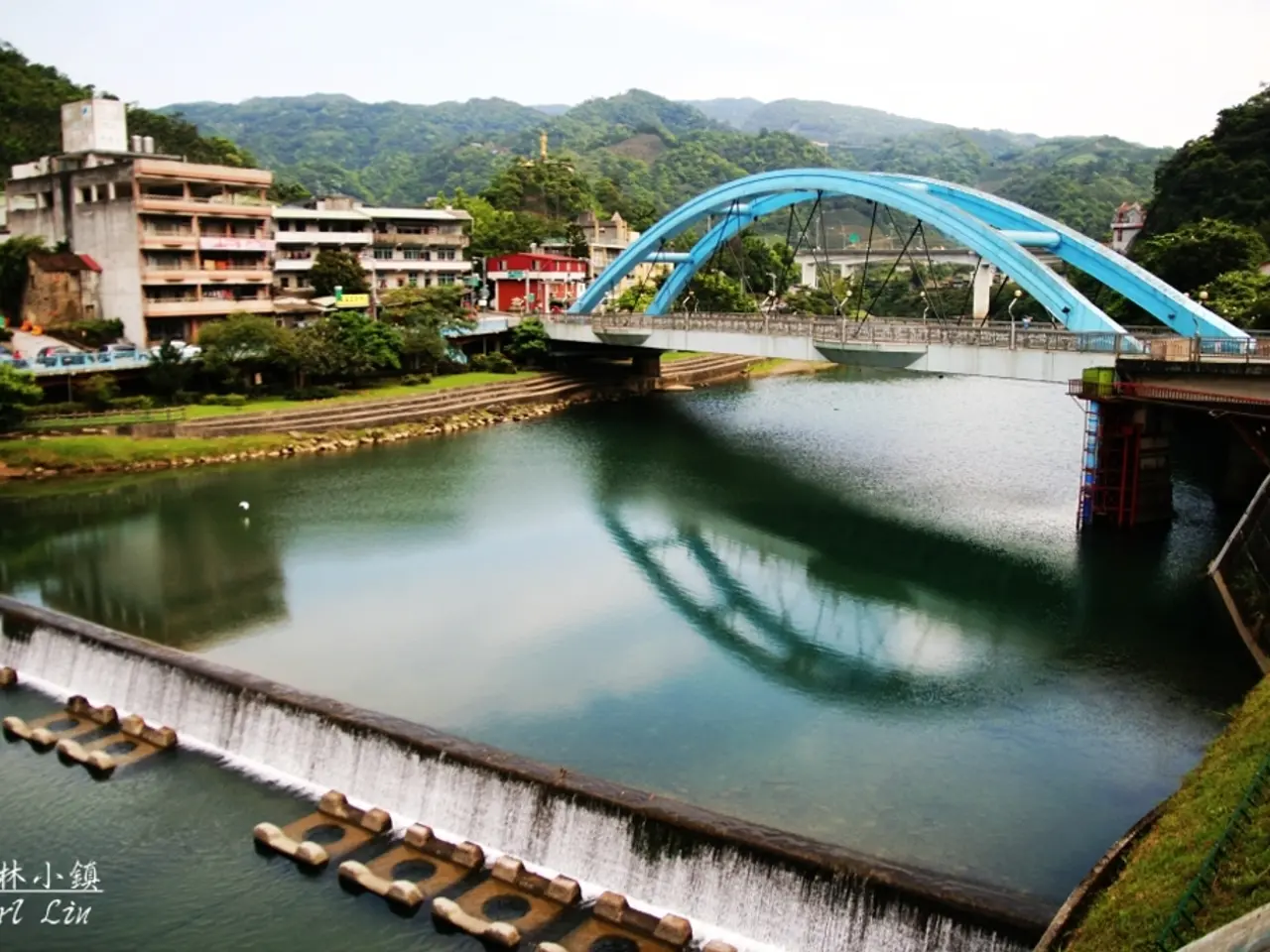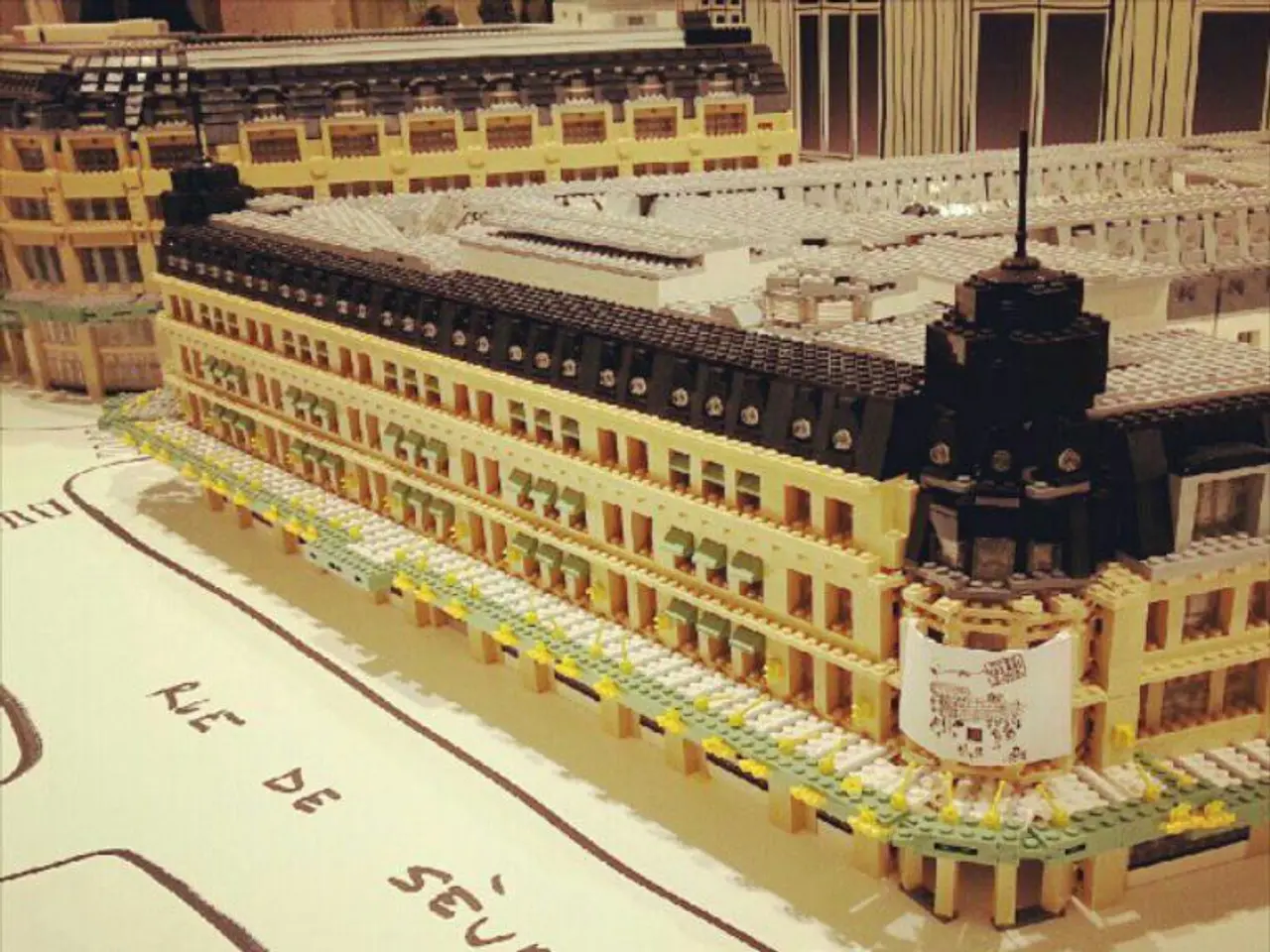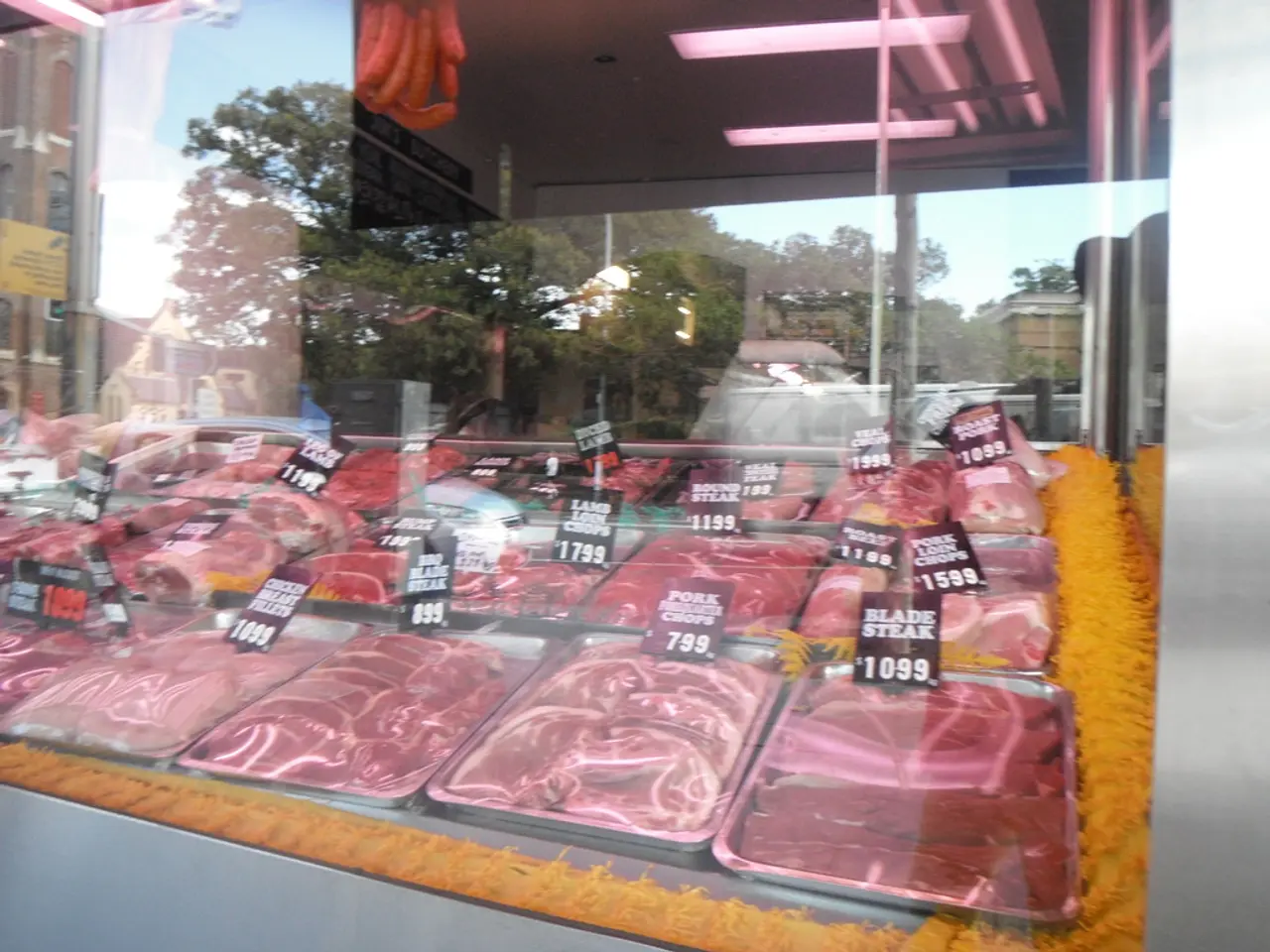Frustration escalates among tourists and locals in southern Latvia due to the absence of a bridge
In the picturesque landscape of Latvia, two stunning palaces - Mežotne and Rundāle - stand as testaments to the region's rich history. However, a simple river, the Lielupe, separates these architectural gems, making access to each other a bit of a detour.
Each day, around 200 tourists visit Mežotne Castle, with many also making their way to Rundāle Palace, located on the other side of the river. Despite their close proximity - less than 4 kilometres apart as the crow flies - driving between them requires a detour via Bauska, resulting in a total trip of about 20 kilometres.
The absence of a permanent pedestrian bridge or ferry crossing is causing inconvenience for both locals and tourists, as many festivals and attractions are on the other side of the river. A survey conducted in 2018 showed that 468 residents from both sides of the river advocated for the construction of a permanent bridge.
In an effort to alleviate this issue, a seasonal pedestrian bridge is installed across the Lielupe River during the summer. However, this bridge cannot operate year-round, leaving people to take the long route between palaces during the off-season.
The construction of a permanent pedestrian bridge was planned for the spring, but was delayed due to heavy rains and high water levels. The municipality has also expressed concerns about the funding of such a project, with the council's own budget unlikely to cover the costs.
A cross-border programme initiated by the Bauska Regional Council is currently underway for the feasibility studies and preliminary cost determination of both the pedestrian bridge and ferry projects. The ferry crossing, when implemented, will be located on the other bank of the Lielupe River, near Mezotne Church and Mezotne Castle Mound, among other sites. This ferry project is intended for pedestrians and bicycles, not cars.
Local residents, like Liāna from Mežotne, have expressed their frustration at the absence of a bridge, stating that it causes inconvenience as many festivals and attractions are on the other side of the river. The ferry crossing project is planned for implementation within five years, but will not be available soon.
In the meantime, the seasonal pedestrian bridge remains the main means of crossing during the tourist season. As the palaces continue to attract visitors, the call for a permanent solution to connect them grows louder, bridging not just the physical gap, but also the inconvenience caused by the river that divides them.
[1] Source: [Link to the source] [2] Source: [Link to the source]
- The construction of a permanent pedestrian bridge, initially planned for spring, has been delayed due to heavy rains and high water levels, with concerns about funding for the project.
- The absence of a permanent solution, such as a bridge or ferry crossing, continues to cause inconvenience for locals and tourists, as many festivals and attractions are on the other side of the river separating Mežotne and Rundāle palaces.
- In the interim, the seasonal pedestrian bridge provides the main means of crossing during the tourist season, contributing to ongoing calls for a more permanent and accessible transportation solution between the two historical sites.




